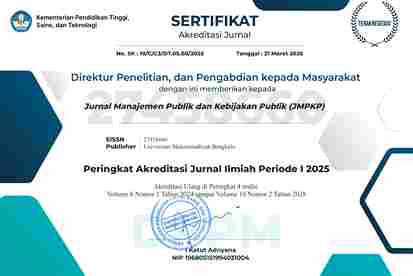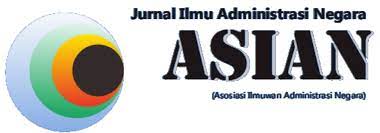EFEKTIVITAS PROGRAM ABSEN FINGER PRINT APARATUR SIPIL NEGARA (STUDI PADA BADAN KEPEGAWAIAN DAERAH PEMERINTAH PROVINSI BENGKULU
Keywords:
Efektivitas, Absen sidik jari, kinerja aparaturAbstract
One of the important things to consider in establishing discipline is the problem of employee attendance. It is common knowledge that there are rumors circulating that civil servants are relaxed, only come and are absent in their daily work behavior. It is also inevitable that many civil servants whose absenteeism were entrusted to other civil servants. Civil servants are required to be disciplined in their work, but in reality many employees do not work well because they are late getting in and leaving early. Therefore, it is necessary to apply a finger print roll call to anticipate this. This study aims to determine the effectiveness of the finger print absence program at the Bengkulu Provincial Regional Staffing Agency and what obstacles are faced in the application of the finger print absence program at the Bengkulu Provincial Government Regional Civil Service Agency in improving the discipline of the state civil apparatus.This type of research used is descriptive qualitative research, this research is an attempt to reveal the problem or situation or event as it is so that it is only as a fact revealer.From the results of this study, researchers have found that initially the Regional Civil Service Agency of Bengkulu Province government used manual absence, and now it has used finger print attendance based on the research results, it turns out that finger print absences still occur violations committed by employees, this is seen from the absence of delay morning, late afternoon attendance, and absenteeism quickly go home. The application of finger print attendance should be applied according to Government Regulation Number 53 of 2010 concerning Discipline of Civil Servants, if employees who do not comply with the rules may be subject to applicable disciplinary penalties









